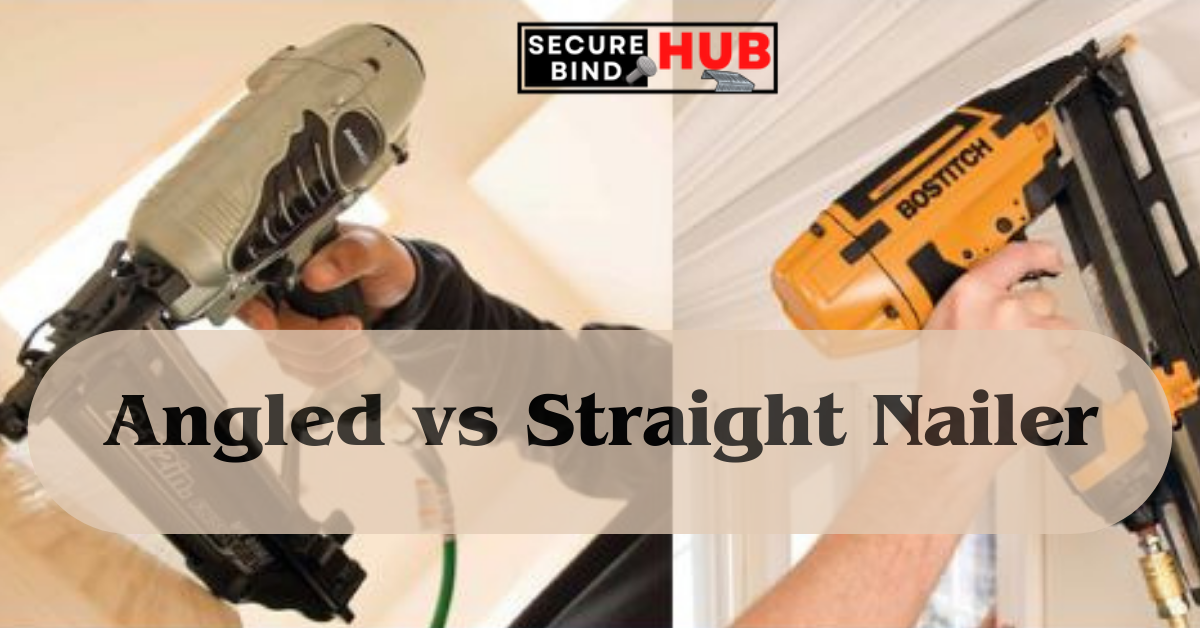When it comes to woodworking or construction projects, having the right tools can make all the difference. Two staple tools in any builder’s arsenal are the angled nailer and the straight nailer. But how can you determine which one best suits your requirements? In this article, we’ll delve into the world of Angled vs. Straight Nailers, helping you understand their nuances, applications, and benefits, so you can confidently pick the right one for your next project.
Angled vs Straight Nailer

Let’s begin by addressing the elephant in the room – the fundamental difference between an angled nailer and a straight nailer.
Angled Nailer: Precision and Maneuverability
An angled nailer, as the name suggests, drives nails at an angle. This design offers unparalleled maneuverability, making it the go-to choice for tight corners and confined spaces. The angled nailer’s angled magazine allows for better access, making it a favorite among carpenters and woodworkers for tasks like baseboard and crown molding installation.
Straight Nailer: Speed and Accuracy
On the other hand, the straight nailer lives up to its name by firing nails in a straight line. This design provides remarkable accuracy and speed, making it ideal for tasks that require precision and efficiency, such as framing and roofing.
Angled Nailer Applications
Now that we’ve established the basic differences, let’s dive deeper into the applications of angled nailers.
- Trim Work
Angled nailers shine when it comes to trim work. Whether you’re installing baseboards, chair rails, or casing, the angled design allows you to reach tight spaces and maintain a clean finish.
- Cabinet Installation
When assembling cabinets, the angled nailer’s ability to work in narrow corners proves invaluable. It ensures your cabinets stay securely in place without any visible nail holes.
- Flooring
Hardwood floor installation demands precision. Angled nailers are excellent for attaching flooring while minimizing the risk of splitting delicate hardwoods.
- Crown Molding
Achieving seamless crown molding installations requires finesse. Angled nailers make it easier to position and secure molding pieces with minimal effort.
Straight Nailer Applications
Now, let’s explore where the straight nailer excels.
- Framing
Framing work requires speed and strength. Straight nailers are the go-to choice for framing walls and roofs, thanks to their ability to drive nails swiftly and securely.
- Roofing
When shingling a roof, precision is key. Straight nailers offer the accuracy needed to secure shingles in place, ensuring a watertight roof.
- Decking
Building a deck involves securing boards firmly. Straight nailers make quick work of attaching decking boards, enhancing the overall stability of your outdoor space.
- Fencing
For fencing projects, straight nailers provide the force required to secure fence pickets and rails, ensuring the longevity of your fence.
Frequently Asked Questions
Can I use an angled nailer for framing?
Yes, you can use an angled nailer for framing, but it may not be as efficient as a straight nailer due to the need for speed and strength in framing applications.
Are straight nailers suitable for trim work?
While straight nailers are not the best choice for trim work, they can be used for simple installations. However, angled nailers are generally preferred for their maneuverability in tight spaces.
Which nailer is better for beginners?
For beginners, angled nailers are often more forgiving due to their ease of use in tight corners. However, it ultimately depends on the specific project and personal preference.
Can I use both nailers for the same project?
Certainly! Some professionals keep both types of nailers in their toolkit to handle various aspects of a project efficiently.
Are there any safety precautions I should take when using nailers?
Yes, safety is paramount. Always wear appropriate safety gear, including eye protection, and follow manufacturer instructions for your specific nailer.
Can I rent these nailers if I don’t want to buy them?
Yes, many tool rental shops offer both angled and straight nailers for rent. This is a cost-effective option for occasional use.
Conclusion
In the ongoing debate of Angled vs. Straight Nailer, there is no one-size-fits-all answer. Your choice should align with your project’s specific requirements. Consider the type of work you frequently undertake, your comfort level with each tool, and the versatility you need. By making an informed decision, you’ll ensure your woodworking or construction projects are executed efficiently and with professional precision.

